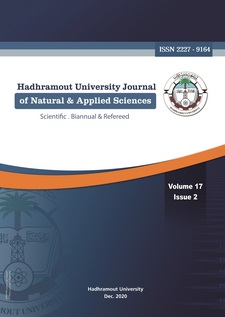Chemical Composition, Total Phenolic Content, Free Radical Scavenging and Antimicrobial Activities of Resins- Juniperus Procera Resins and Relevant Propolis Produced by Apis Mellifera Jementica in Al-Baha Province, Saudi Arabia
Keywords:
Juniperus procera resins, Propolis, Apis mellifera jemeniticaAbstract
The purpose of this study was to investigate the chemical compositions, total phenolic contents (TPC), free radical
scavenging (FRSA), and antibacterial activities of Juniperus procera resins and the relevant propolis produced by
Apis mellifer jementica in Al-Baha Province, Saudi Arabia. The results showed that both the resin and propolis samples, which were collected during April to June of 2014 and 2015, contained different compounds and included
mono-, sesqui-, di-, and triterpenoids, wax esters, n-alkane, and n-alkene. The TPC levels of the resin and propolis
samples were high for samples collected in 2014 relative to the samples collected in 2015. Also, the FRSA of the
resin and proplois samples collected in 2014 was higher than the samples collected in 2015. All various solvents
(DCM, DCM:MeOH, and MeOH) extracts of resin and propolis samples collected in 2014 showed very low inhibition against Aspergillus niger.; whereas the different solvent extracts of propolis collected in April 2015 showed significant inhibitory activity against E. coli (P < 0.05). In contrast, resin and propolis extracts of samples collected in
2015, showed no significant difference in their ZOI against C. albicans. Clearly, propolis extracts produced by honeybees from J. procera resins showed strong inhibitory activity against E. coli and S. aureus and comparatively weak
activity against C. albicans and A. niger.

